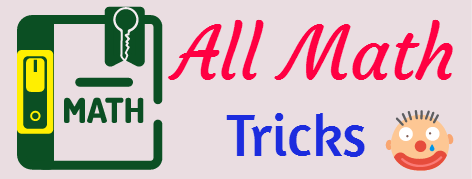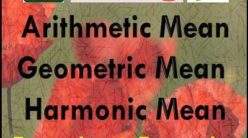In this session explained about basic concepts of sequence and series with their problems and solutions
Basic Concepts of Sequence and Series Problems and Solutions
Sequence
A set of numbers arranged in a definite order according to some definite rule is called sequence.
i.e A sequence is a set of numbers written in a particular order.
Now take a sequence
m1, m2, m3, m4, . . . . . . . . , mn
Here first term in a sequence is m1, the second term m2, and so on. With this same notation, nth term in the sequence is mn.
Examples of sequence
1. Take the numbers 1, 5, 9, 13, 17, . . . . . .
In the above numbers seem to have a rule. It is started with the a number 1, and add a number 4 to previous number to obtained successive number
2. Take the numbers 1, 5, 25, 125, 625 . . . . . .
In the above numbers seem to have a rule. It is started with the a number 1, and multiplying with a number 5 to previous number to obtained successive number
3. Take the numbers 1, 8, 27, 64, 125, 216 . . . .
This is the sequence of cube of numbers.
4. Take the numbers 2 , −2, 2, −2, 2, −2, . . .
In the above sequence of numbers alternating between 2 and −2.
In above all examples, the dots written at the end indicate that we must consider the sequence as an infinite sequence.
5. The numbers 1, 9, 17, 25, 33
In the above example having form a finite sequence containing just five numbers.
6. Take numbers 1, 3, 5, 7, 9, 11, . . . . . . . n
In the above sequence, last number mentioned as ‘n’. So it is finite sequence
Series
The sum of the terms of a sequence is called a series
i.e A series is obtained from a sequence by adding all the terms together.
Take a sequence m1, m2, m3, m4 . . . . . . . . , mn
The series we obtain from this is m1 + m2+ m3 + m4 + . . . . . . . . + mn
Finite series and Infinite series
The series 1 + 9 + 17 + 25 + 33 is called finite series
The series 1 + 9 + 17 + 25 + 33+ . . . . . . . . . . . . is called infinite series
Sequence and series examples
1. A sequence is given by the formula mn = 2n + 3, for n = 1, 2, 3, . . .. now find first four terms of this sequence.
Solution: nth term of the sequence is mn = 2n + 3
First term of the sequence is = 2 ( 1)+3 = 5 ( substitute n = 1)
Second term of the sequence is = 2 ( 2 )+3 = 7 ( substitute n = 2)
Third term of the sequence is = 2 ( 3 )+3 = 9 ( substitute n = 3)
Fourth term of the sequence is = 2 ( 4)+3 = 11 ( substitute n = 4)
2. A sequence is given by mn = 2/(n+2), for n = 0, 1, 2, 3, . . .then find 8th term?
Solution: nth term of the sequence is mn = 2/(n+2)
Now 8th term of the sequence is (1.e n= 7) = 2/9
3. Find first three terms of the following sequence, beginning with n = 0,1 & 2. mn = 2/(n+2)!
Solution: nth term of the sequence is mn = 2/(n+2)!
Now 1st term of the sequence is (1.e n= 0) = 2/2! = 2/2 = 1
2nd term of the sequence is (1.e n= 1) = 2/3! = 2/6 = 1/3
3rd term of the sequence is (1.e n= 2) = 2/4! = 2/24 = 1/12
So the sequence is 1 , 1/3 , 1/12
Related Articles
Arithmetic Progression Formulas
Arithmetic Progression Problems
Arithmetic Mean formula with Examples
Geometric Progression Formulas and Properties
Geometric progression problems and solutions
Relationship Between AM, GM and HM
Factorizing Algebraic Expressions






